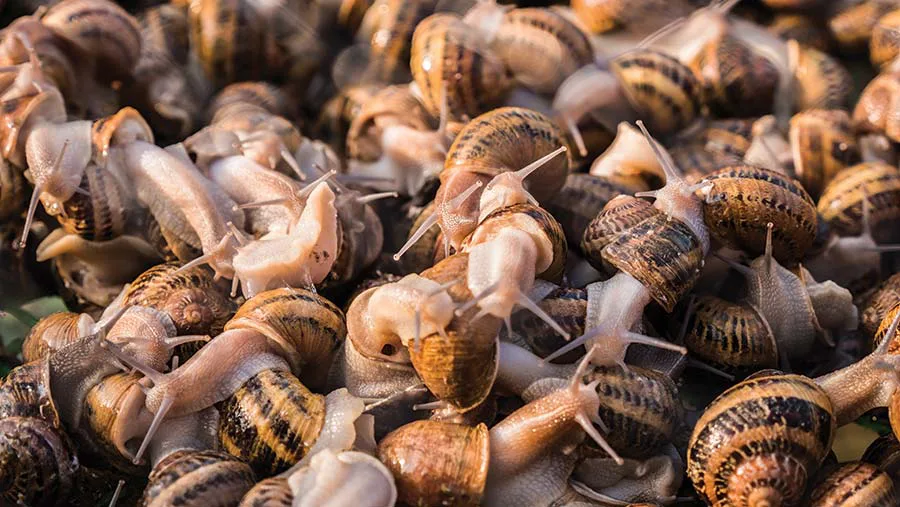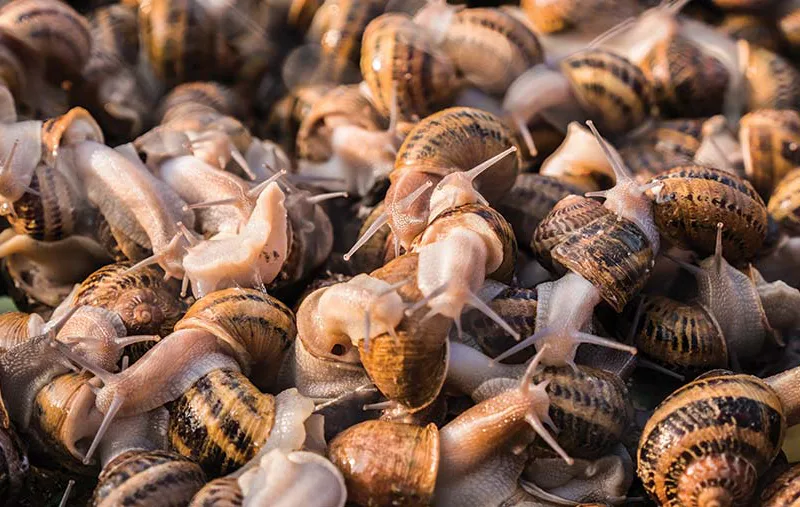Start your snail farming business in Nigeria with this comprehensive guide. Learn about the best species, feeding practices, cost estimates, and marketing strategies.

Snail farming, also known as heliciculture, is an agribusiness venture with immense potential in Nigeria. It’s highly profitable due to the increasing demand for snail meat locally and globally. If you’re considering starting a snail farm, this detailed guide will walk you through every essential step to set up and manage a successful snail farming business in Nigeria.
Why Snail Farming in Nigeria is Lucrative
- High Demand for Snail Meat:
Snail meat is not only a delicacy but also known for its health benefits, including high protein content, low fat, and cholesterol levels. The demand far outweighs supply in Nigeria. - Low Investment and Running Costs:
Snail farming requires minimal capital, making it accessible to anyone willing to start small. Snails eat mostly vegetable-based waste and other cheap food sources. - Fast ROI with Minimal Risks:
With proper management, you can begin harvesting snails within 8–12 months. The risk of disease outbreaks is minimal compared to poultry or fish farming. - Export Potential:
Snails are highly valued in international markets, especially in Europe and the USA, where they are used in culinary dishes and pharmaceutical products.
Step 1: Conduct Market Research
Detailed Notes:
- Understand your local market. Visit markets, restaurants, and hotels to assess the demand for snail meat.
- Research the prices during different seasons. For instance, snails are scarce and more expensive during the dry season.
- Identify your potential customers, including individuals, food vendors, and exporters.
Key Question to Answer: Is there a consistent market for snails in your location, or will you need to focus on exports?
Step 2: Choose the Right Snail Species
Detailed Notes:
The species you choose directly impacts the growth rate, reproduction, and profitability.
- Archachatina Marginata:
- Large in size and highly marketable.
- Takes slightly longer to mature but yields higher meat quantity.
- Achatina Achatina (Tiger Snail):
- Known for rapid reproduction.
- Produces large egg clusters, making it ideal for scaling up quickly.
- Achatina Fulica:
- Smaller but easier to manage.
- Suitable for beginners due to its adaptability to different environments.
Pro Tip: Begin with Archachatina Marginata as it is the most popular in Nigeria and fetches a premium price.
Step 3: Secure a Suitable Location
Detailed Notes:
Snails thrive in environments that mimic their natural habitat. Here’s what to consider:
- Climate:
- Snails require a humid and moist environment to grow.
- The ideal temperature range is 20°C–30°C.
- Soil Type:
- Loamy soil with organic matter is the best as snails burrow into the soil.
- Avoid sandy or waterlogged soil, which can harm snail eggs.
- Space Requirements:
- Allocate at least 1 square meter for 15–25 snails to avoid overcrowding.
- Ensure the area is secure from predators like rats, ants, and snakes.
Step 4: Build or Set Up Your Snail Pen
Detailed Notes:
The pen design depends on your budget and scale of operation:
- Hutch Boxes:
- Made from wood and wire mesh.
- Suitable for small-scale farmers.
- Trench Pens:
- Built with low-cost materials like bricks or wood.
- Covered with nets to protect snails from predators.
- Free-Range System:
- Most natural and scalable option.
- Requires a large space with proper fencing and vegetation.
Essential Features:
- Shade to protect snails from direct sunlight.
- Proper drainage to prevent waterlogging.
Step 5: Source Healthy Snails or Breeders
Detailed Notes:
- Buy snail breeders or hatchlings from a reputable farm.
- Ensure the snails are active and have strong, unbroken shells.
- Start with at least 50–100 snails to test the waters before scaling up.
Pro Tip: Look for breeders in the rainy season as snails are more active and easier to source.
Step 6: Feed Your Snails Properly
Detailed Notes:
Snails require a balanced diet for growth and reproduction.
- Primary Foods:
- Vegetables: Lettuce, cabbage, spinach.
- Fruits: Pawpaw, bananas, watermelons.
- Tubers: Yam and potato peels.
- Calcium Supplements:
- Use eggshells, limestone, or bone meal to ensure strong shells.
- Water:
- Place shallow bowls of clean water in the pens.
Feeding Tips: Feed your snails in the evening when they are most active.
Step 7: Manage the Farm Efficiently
Detailed Notes:
- Hygiene:
- Clean the pens regularly to prevent disease.
- Remove leftover food to avoid attracting ants and rodents.
- Monitor Growth:
- Measure the snails’ weight and shell size periodically.
- Isolate slow growers or unhealthy snails.
- Breeding:
- Keep a ratio of 1:3 (male to female) for optimal reproduction.
- Regularly collect eggs and incubate them in moist soil.
Step 8: Harvesting Snails
Detailed Notes:
- Harvest snails after 8–12 months when they have reached full maturity.
- Check for fully developed shells as a sign of readiness.
- Handle snails carefully to avoid shell breakage, which reduces their market value.
Harvesting Tips: Harvest in batches to maintain a steady supply for your market.
Step 9: Marketing and Selling Your Snails
Detailed Notes:
- Local Sales: Sell directly to local markets, restaurants, and individuals.
- Online Platforms: Use social media, e-commerce sites, and WhatsApp groups to reach more buyers.
- Export: Partner with export agencies to sell to international markets.
Value Addition: Process snails into packaged meat or sell snail slime for cosmetics and pharmaceuticals.
Step 10: Challenges and Solutions in Snail Farming
Common Challenges:
- Predators:
- Use nets and barriers to keep out ants, rats, and snakes.
- Climatic Issues:
- Install sprinklers to maintain moisture levels during the dry season.
- Low Awareness:
- Educate potential customers about the health benefits of snail meat.
Solutions: Regular monitoring and implementing best practices can mitigate most challenges.
Cost Breakdown for Starting Snail Farming in Nigeria
| Item | Estimated Cost (₦) |
|---|---|
| Snail Breeders (50-100) | 20,000–50,000 |
| Pen Construction | 50,000–100,000 |
| Feeding (monthly) | 10,000–20,000 |
| Miscellaneous Expenses | 10,000 |
Tips for Scaling Your Snail Farm
- Reinvest Profits: Expand your farm and increase snail stock.
- Diversify: Explore new markets, such as snail slime for cosmetic use.
- Automation: Use automated feeding and irrigation systems for efficiency.
Snail farming is a sustainable and lucrative business opportunity in Nigeria. With proper planning, management, and marketing, you can turn this venture into a profitable enterprise. Start small, learn the ropes, and scale gradually to meet increasing demand. The opportunities are limitless!






